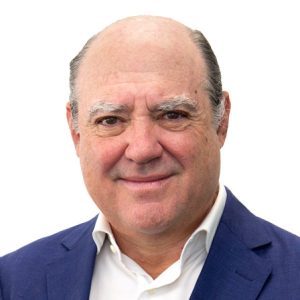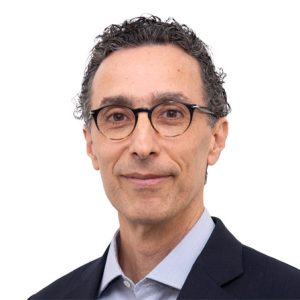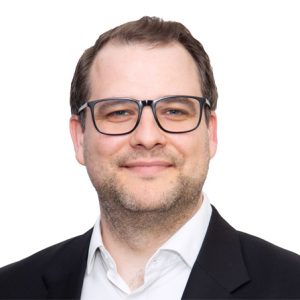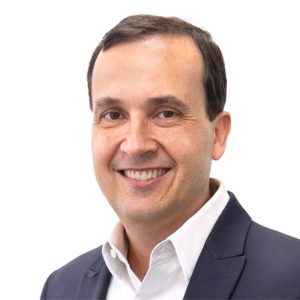
Building excellence in procurement
Building excellence in procurement
Best practices and practical steps for advancing
HOW TO ADVANCE IN PROCUREMENT
With the business environment and supply markets constantly evolving, company executives and their procurement leaders are always seeking innovative ways to update and adapt their organizations. In this context, ensuring continued competitiveness and future viability means keeping a finger on the pulse of evolving approaches to procurement and knowing when it’s time to adjust this function to a new reality. In the present report, we share our view on what excellence in procurement looks like today along with practical steps for effectively advancing on this front.
A BASIS FOR THE TRANSFORMATION
Regardless of whether your business is more or less mature in terms of the best practices outlined above, there is a clear, tried-and-tested path to achieving greater excellence. For business leaders unsure about how to approach this endeavor, experience shows that advancing on the journey toward procurement excellence is accessible to organizations at any level of maturity. Procurement excellence does not have to be a big-bang move: the path to success should be gradual, allowing your business to reap incremental yet significant benefits along the way. Advancing towards excellence means addressing two pillars, the first of which fuels and sustains the latter:
■ Start capturing value
■ Sustain value by implementing support measures
Find out more about Excellence in Procurement and how Integration can support your business by downloading the report below:
Case studies
Challenge
A client in the consumer packaged goods segment needed support to advance its procurement practices in an important category of spend: corrugated packaging. The company had few strategic sourcing practices in place, with its two regional business units essentially pursuing their own approaches – sharing only 37% of spend.
Apart from working separately with very similar suppliers over many years, the business units did not have a well-defined process in place to monitor and leverage information on product performance for the packaging products it was ordering – thereby missing out on significant opportunities for volume and specification optimization.
Approach
Through a structured sourcing methodology, several levers were applied to extract further value:
- Exhaustive exploration of the supply market: Identified new suppliers through an exhaustive RFI process, including those from overseas
- Leverage volume: Consolidated volume from both business units in fewer suppliers
- Execute a cost-model RFP: Gathered granular cost information on each supplier, for each product and its components (raw material costs, setup costs, conversion costs, logistics etc.)
- Performance spec optimization: Optimized over-spec’ed boxes
- Structured RFP/negotiation process: Set a clear approach to negotiations with a multi-functional team with specific roles
Results
Hundreds of potential suppliers were approached with an RFI and screened, doubling the pool of candidates from 16 to 30. The base of suppliers was also expanded internationally to mirror supply markets, now including partners in the United States and Asia. The new cost-model RFP allowed the client to
- understand the suppliers’ cost structure and use this to gain bargaining power,
- leverage new innovation opportunities for packaging and
- identify and eliminate significant cost variance between similar products.
A new process using the packaging performance index allowed the client to eliminate over[1]specifications for better cost and performance.
The structured approach to RFPs and negotiations led procurement to leverage expertise from user areas (such as manufacturing and QA), gaining a stronger position when negotiating – with more pressure on incumbent suppliers and flexibility in moving to new ones.
All of these advancements generated to 18% in cost reductions on a spend baseline of nearly 20 million USD. Over half of these savings came from supplier negotiations and the remainder from optimized product specifications.
Challenge
A client in the civil construction industry needed support in bringing greater efficiency and cost savings to its global procurement organization. The primary aim was to reorganize sourcing – spread across six countries and over ten business units – into centralized teams responsible for entire countries or continents, with fewer and more focused local teams taking care of more sensitive categories. While the client wanted to design the leanest possible organizational structure, it would be critical for the business to maintain service levels across all operations while also respecting at times very different realities across the business units.
Approach
Several actions needed to be taken in order to design a suitable organizational structure for procurement and start implementing changes.
- Identify the level of each supplier market and similarities across the categories purchased by the different business units to leverage volume consolidation
- Carry out a complete review of the procurement organization structure to support centralization initiatives clustered at the national or the continental level
- Determine which procurement processes (from issuing orders to following-up) can be moved to a shared services center
- Maintain the right balance between efficiency/ standardization and service levels based on the reality of each category and operation
Results
After designing a new procurement organization with buy-in and support from stakeholders across all operations, the project succeeded in increasing centrally sourced spend from 20% to 42%. This move allowed procurement to capture overall savings of 3 to 6%.
Concurrently, a leaner organizational structure was implemented, with more procurement professionals focused on strategic sourcing and less time spent on transactional activities. Numerous procurement processes were moved into a shared services center, allowing procurement to focus on more complex categories and strategic sourcing. Overall, the procurement organization was reduced by 37%, resulting in annual savings of around 3 million USD.
To maintain the needed balance between efficiency and service level, small local teams were kept for critical categories such as primary materials and to take care of urgent measures that can only be resolved locally.
Closing thoughts
Through this report, we hope to have provided greater clarity on what leading companies are doing to achieve excellence in procurement as well as what aspiring companies can do to advance. There are two key messages that are worth highlighting:
Procurement has evolved beyond its transactional roots and now holds the potential to provide virtually any business a range of benefits, from reducing costs to innovating and being sustainable.
There is a clear and practical way forward that companies at any level can pursue to leverage these benefits and start transforming their procurement practices.
While reaching greater excellence in procurement may require companies to address a variety of changes, experience shows that the most effective way forward is through a gradual, step-by-step approach based on a structured methodology – allowing wins made along the way to generate momentum across the organization.
As in any other transformation, making improvements to an existing procurement model, sustaining new ways of working and generating results will depend on the people involved. This makes it imperative to align areas that interact with procurement throughout the journey and ensure transparency regarding the goals of the transformation.
Most importantly, success will lie in achieving buy-in from your procurement professionals and keeping them motivated by sharing results and achievements, setting the right incentives and providing clarity on their career progression.
TALK TO US
- On 15 March 2023








